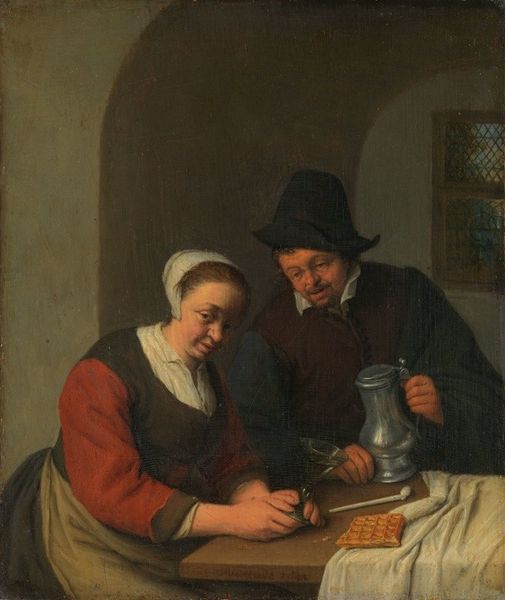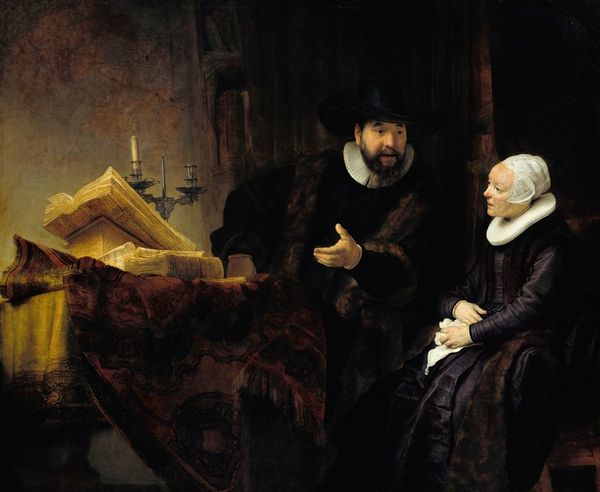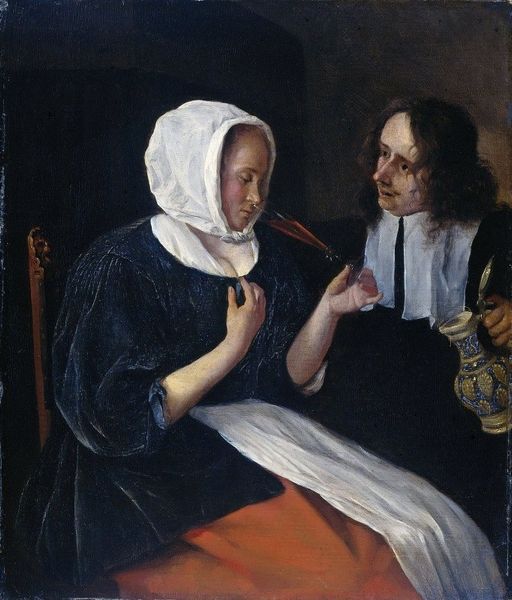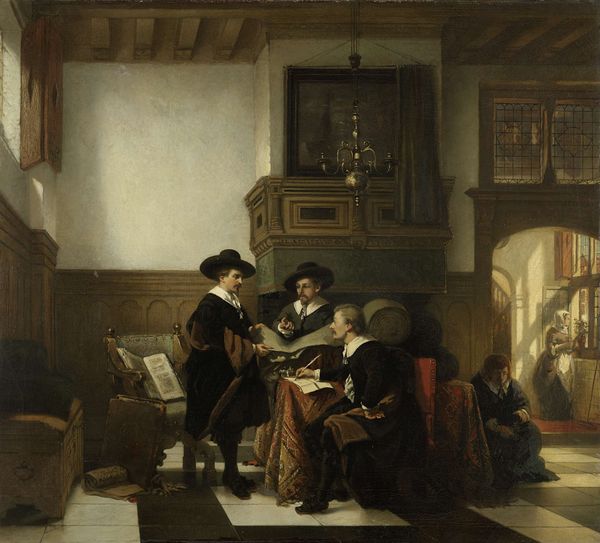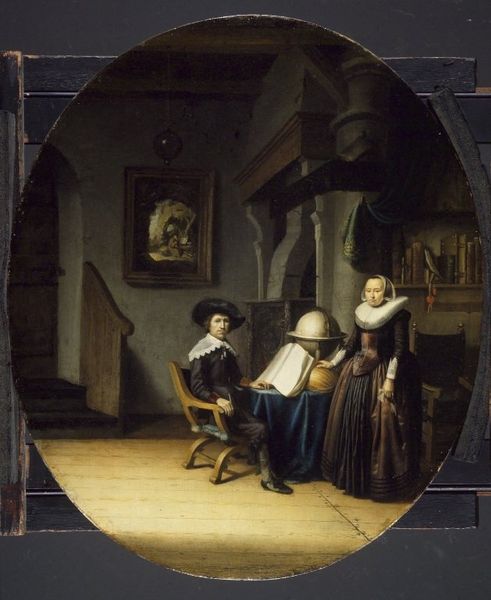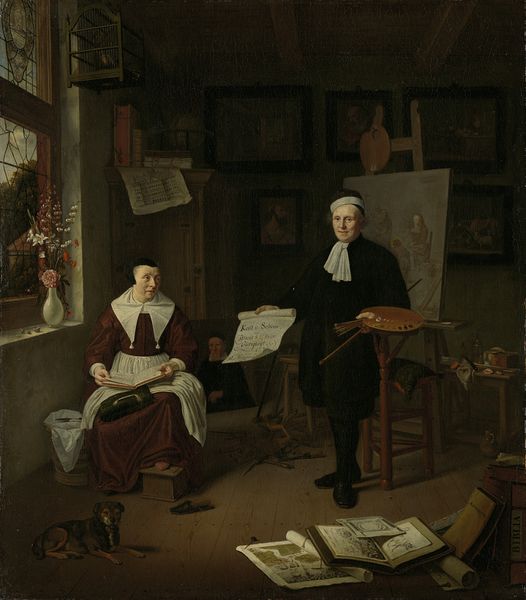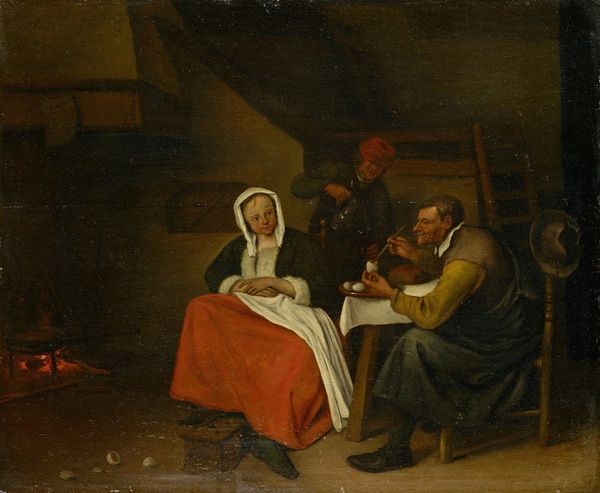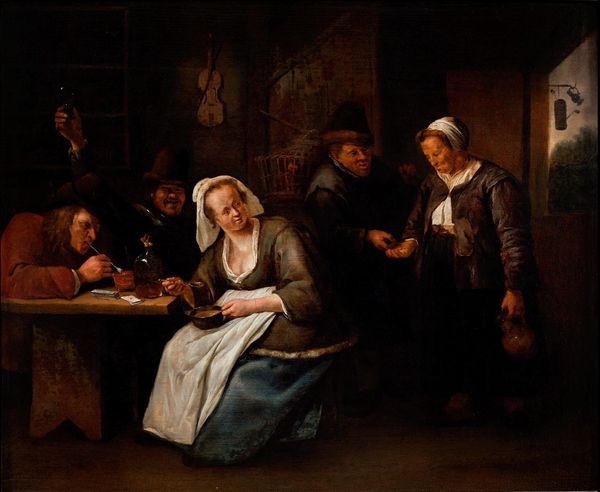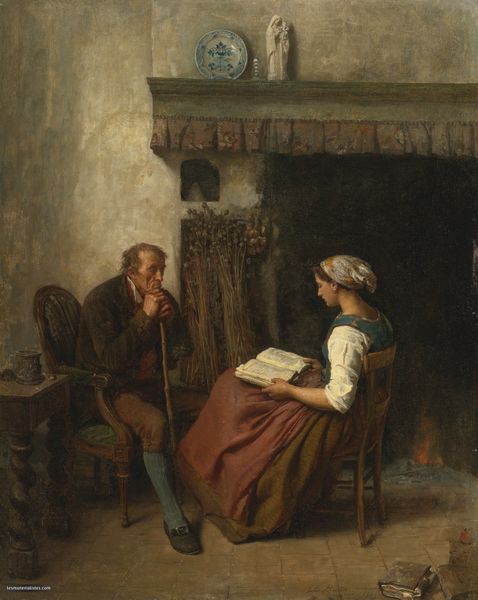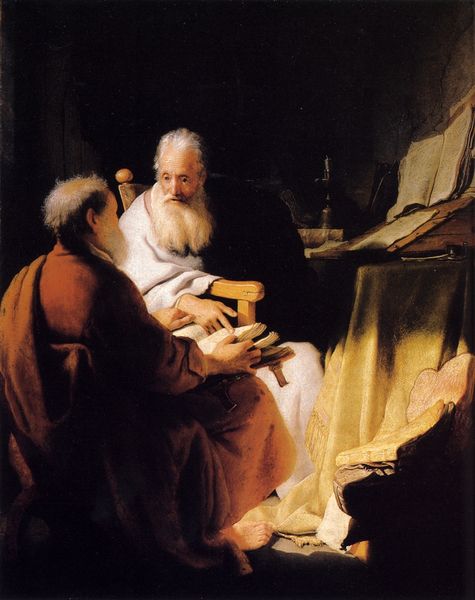
painting, oil-paint
#
portrait
#
baroque
#
dutch-golden-age
#
painting
#
oil-paint
#
figuration
#
genre-painting
Copyright: Public domain
Rembrandt van Rijn, likely in the 1630s, captured this intimate moment with oil on canvas. The composition, dominated by dark hues, immediately draws our attention to the contrasting whites of the shipbuilder's collar and the paper he holds. The scene is structured around a dynamic exchange: the wife interrupts her husband's work, her forward motion contrasting with his seated stillness. Rembrandt's use of light and shadow is crucial here. It not only sculpts the figures, lending them a palpable presence, but also directs our gaze. Notice how the light catches the tools on the table, underscoring the shipbuilder's trade, while his wife is illuminated, drawing us to her alert expression. This interplay of light and dark, stillness and movement, suggests a deeper narrative. It invites us to consider the roles within this domestic space, the intersection of labor and companionship, and the subtle power dynamics at play. The painting functions as a cultural signifier of domestic and societal arrangements during the Dutch Golden Age.
Comments
No comments
Be the first to comment and join the conversation on the ultimate creative platform.
